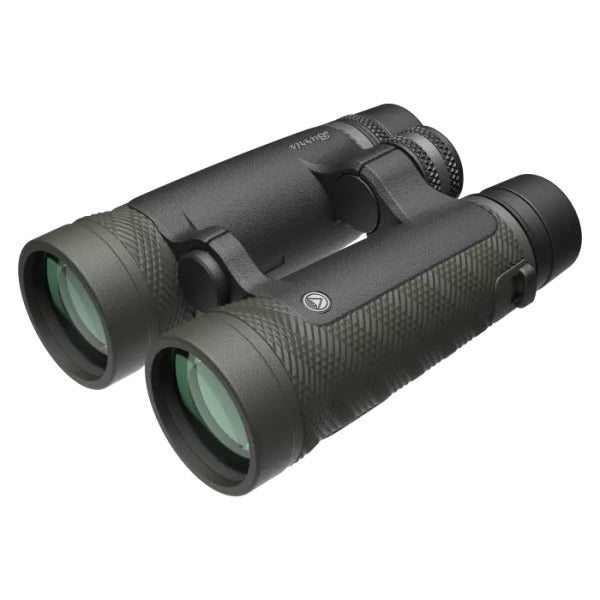Introduction
When it comes to western big game hunting—whether you're glassing for elk in Colorado, tracking mule deer across Nevada, or surveying high country in Montana—your binoculars aren’t just a tool, they’re your eyes. As a seasoned hunter who has spent years stalking some of the most elusive game in rugged western terrain, I can tell you that choosing the right binoculars can be the difference between success and a long, frustrating trip.
In this guide, I’ll walk you through what to look for in binoculars for western big game hunting, from magnification to lens coatings, durability to field of view. Let’s make sure your optics match the terrain and your ambition.
Why Optics Matter in Western Hunting
Western hunting is glassing-intensive. You’re often spending hours scanning mountainsides, basins, or ridgelines from hundreds or even thousands of yards away. Unlike whitetail hunting in the East where shorter range is common, western terrain demands clarity and comfort over long periods of use.
Good optics will not only improve your success rate but also reduce eye fatigue and increase your ability to locate game quickly. That’s why investing in the right pair of binoculars is just as critical as your rifle or boots.
Key Features to Consider
1. Magnification and Objective Lens Size (e.g., 10x42, 12x50)
The numbers on binoculars tell you two things:
-
The first number is magnification (how many times closer the image appears).
-
The second number is the diameter of the objective lens in millimeters.
For Western Big Game:
-
10x42 is the most popular balance for range and portability.
-
12x50 is great for longer glassing but may require a tripod.
2. Field of View (FOV)
A wide field of view helps you scan more terrain quickly. While high magnification narrows the FOV, a wider FOV at 10x can still give you an efficient balance.
Tip: Look for at least 330 feet at 1000 yards for ideal western glassing.
3. Lens Coatings
Anti-reflective coatings improve light transmission, contrast, and clarity.
-
Fully Multi-Coated lenses are preferred.
-
ED Glass (Extra-low Dispersion) helps reduce chromatic aberration.
4. Durability and Waterproofing
Your binoculars need to withstand sudden weather shifts, snow, and rugged bumps. Look for:
-
Waterproof and fog-proof construction (nitrogen or argon-purged)
-
Rubberized armor for shock resistance
5. Weight and Comfort
You’ll be hiking and glassing for hours. Binoculars that are too heavy can cause neck strain, especially if worn without a harness. Lightweight, compact models with neck straps or binocular harnesses are essential.
Shop our favorites here
https://shopbattlebornclothing.com/collections/binoculars
Top Picks for Western Big Game Hunting Binoculars
-
Swarovski EL Range 10x42
-
Legendary clarity, rugged build, and Top Shelf
-
-
Leica Noctivid 10x42
-
Premium option with unmatched light transmission.
-
-
BURRIS SIGNATURE HD BINO 12X50mm
-
Higher Magnification rugged with crisp glass
-
-
Nikon Monarch M7 10x42
-
Excellent value for budget-conscious hunters.
-
-
LEUPOLD BX-5 SANTIAM HD 10X50MM
-
Powerful magnification for long-range glassing.
- https://shopbattlebornclothing.com/products/leupold-bx-5-santiam-hd-10x50mm-gray-binoc
-
Pro Tips for Binocular Use in the Field
-
Use a Tripod for 12x+ Binoculars: Stability reduces shake and eye strain.
-
Harness It: A chest harness will balance weight and keep binoculars handy.
-
Practice Glassing: Learn to grid-scan terrain methodically.
-
Clean Lenses Carefully: Use microfiber cloths and lens cleaning kits.
FAQs
Q1: Should I get a rangefinder or binoculars with built-in rangefinder?
A combo is great if budget allows. It reduces gear and increases speed in the field.
Q2: Are 10x42 binoculars good enough for elk hunting?
Absolutely. Most elk hunters use 10x42s due to their balance of size, weight, and clarity.
Q3: What's the benefit of ED glass?
It reduces chromatic aberration, giving you sharper, clearer images—especially in low light.
Q4: Is it worth spending over $1,000 on binoculars?
If you're serious about western big game hunting, yes. Optics are long-term investments.
Conclusion
Whether you’re a first-time western hunter or a seasoned backcountry pro, having the right binoculars can define your success. From glassing hours on end to making that final stalk, optics play a crucial role. Prioritize quality, comfort, and clarity. Your legs will get you to the mountain, but your optics will show you where the trophy hides.


